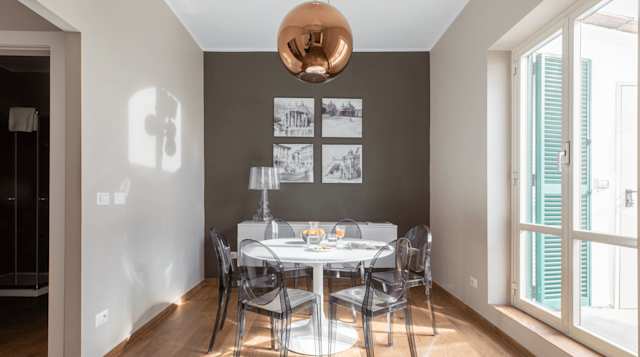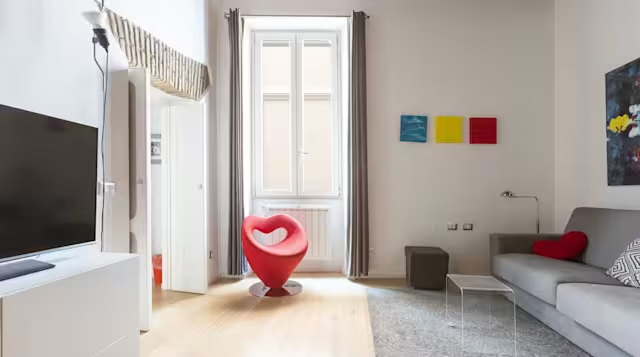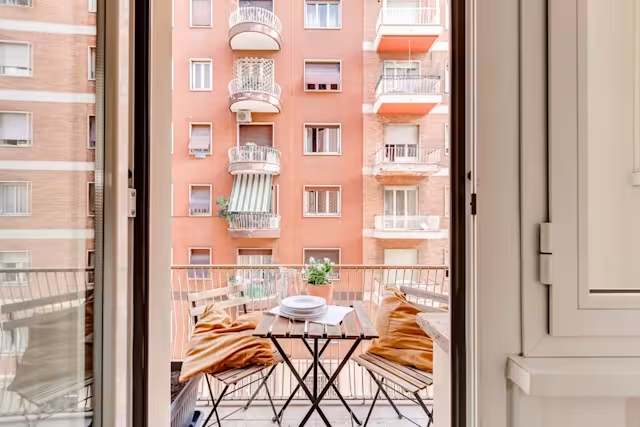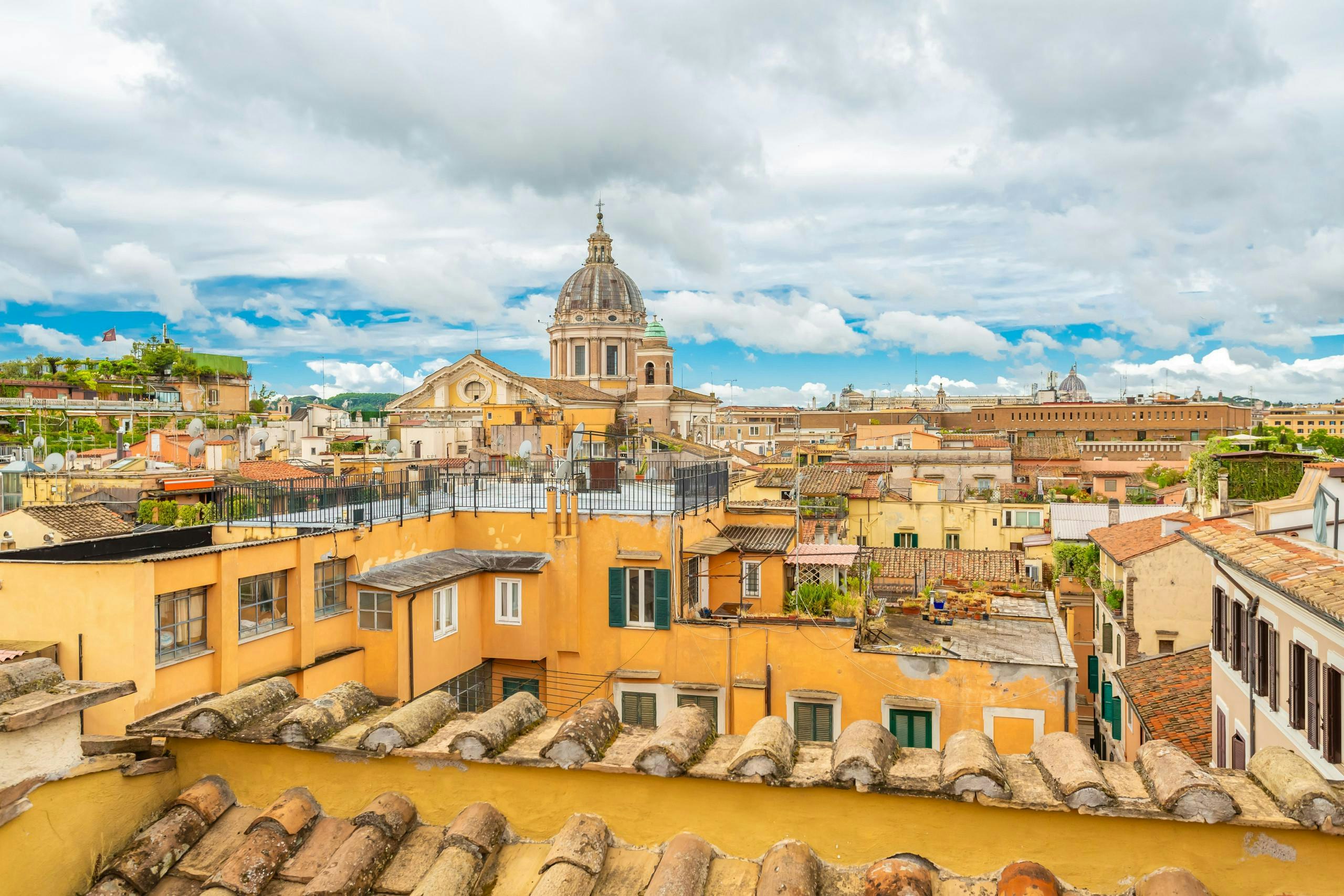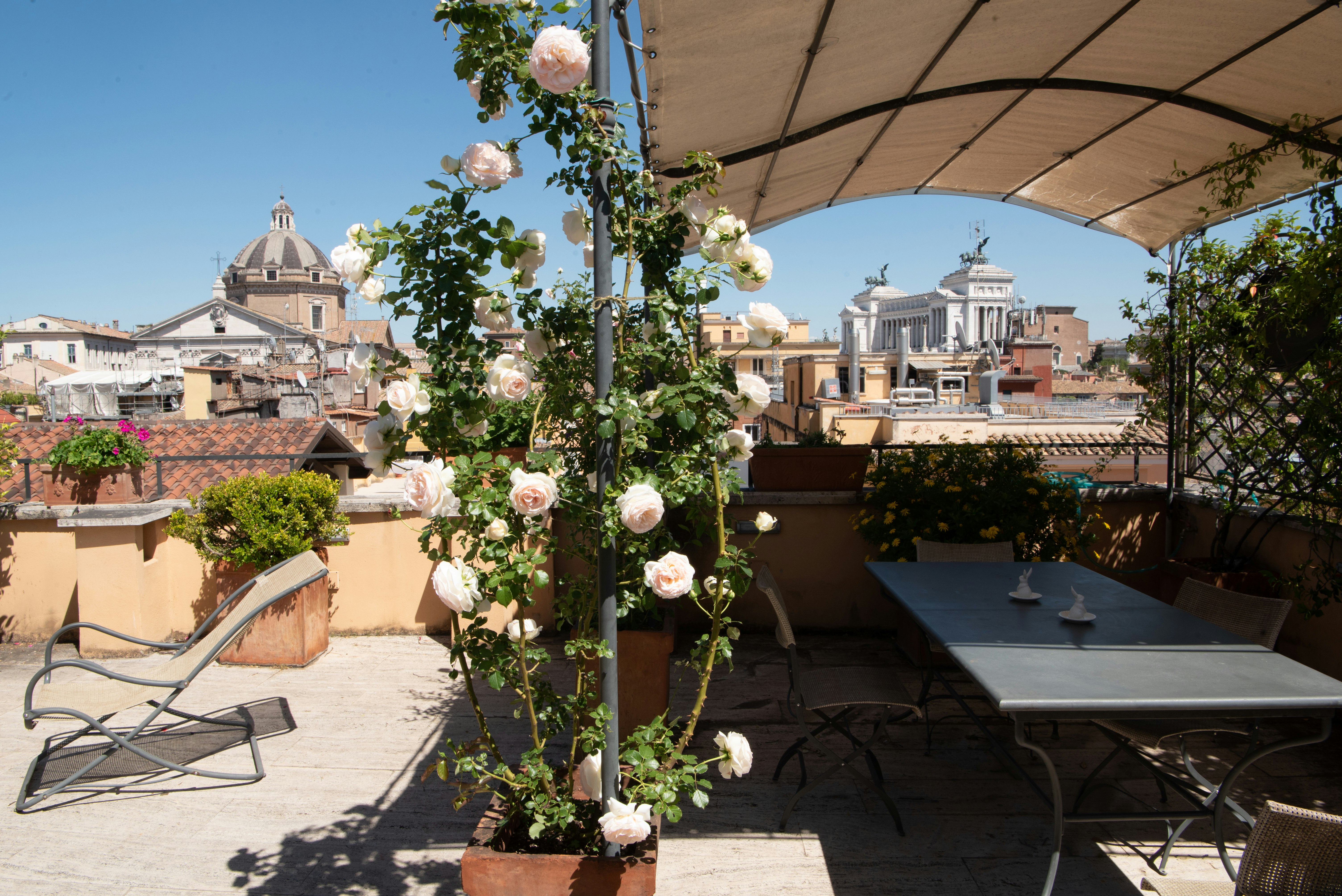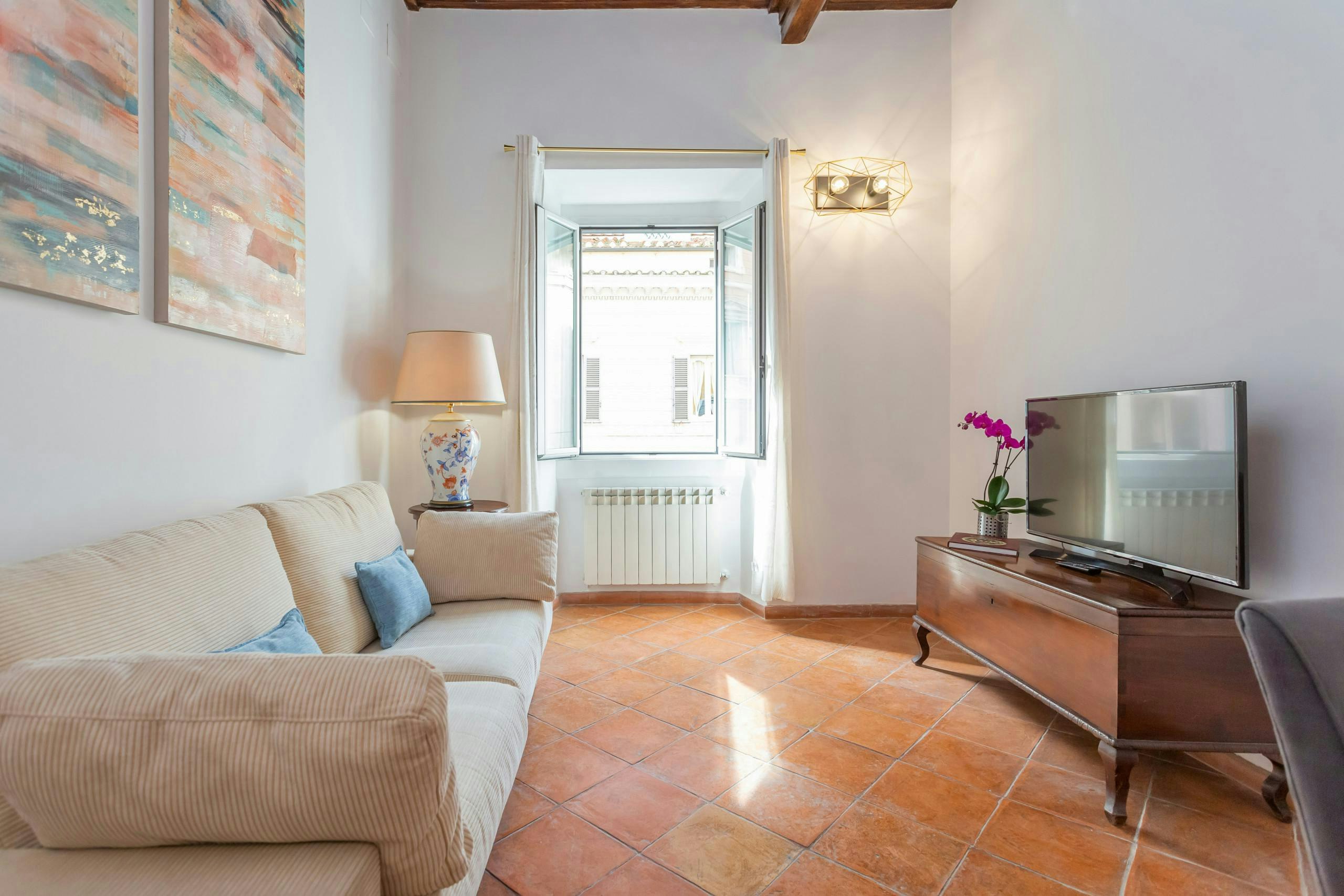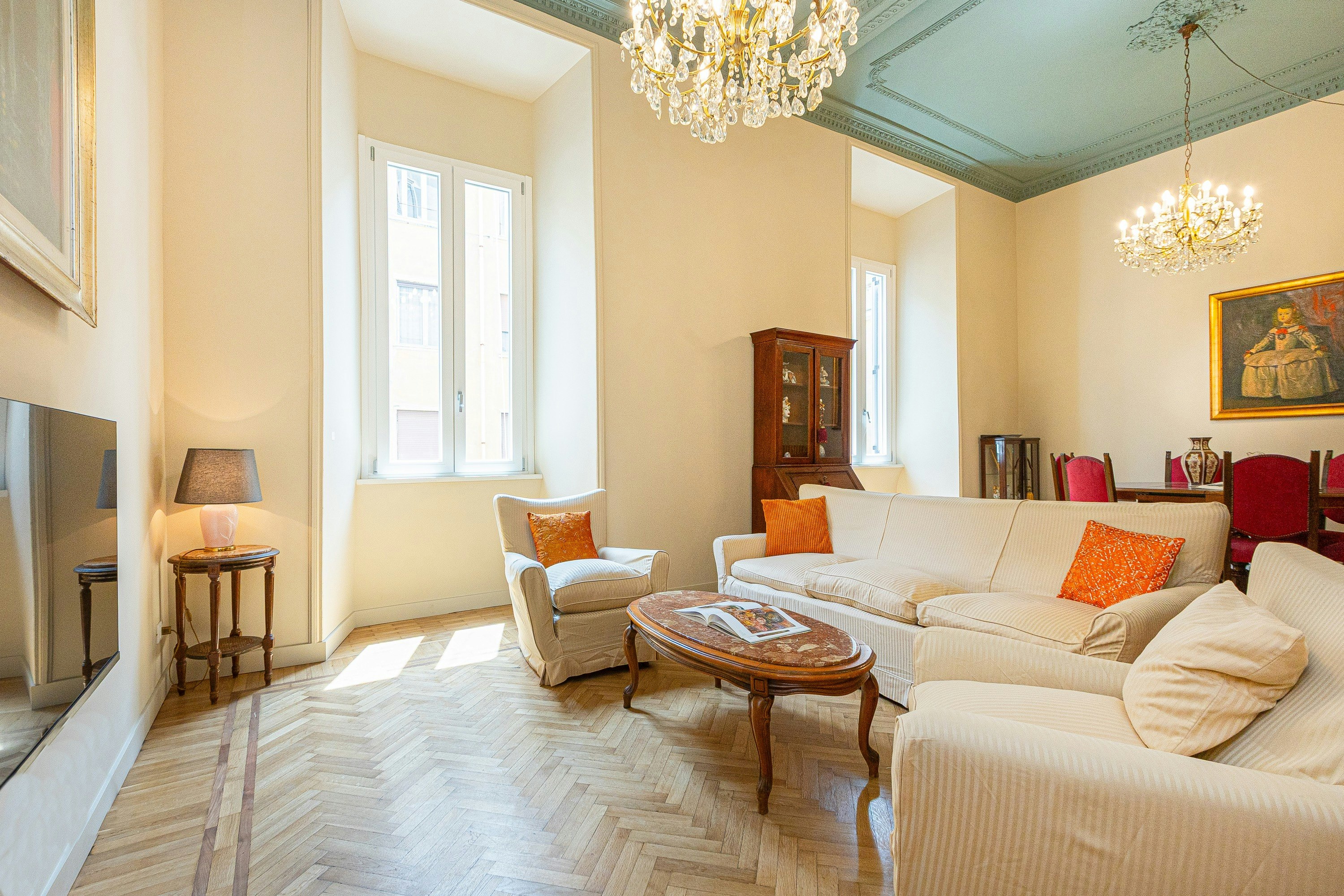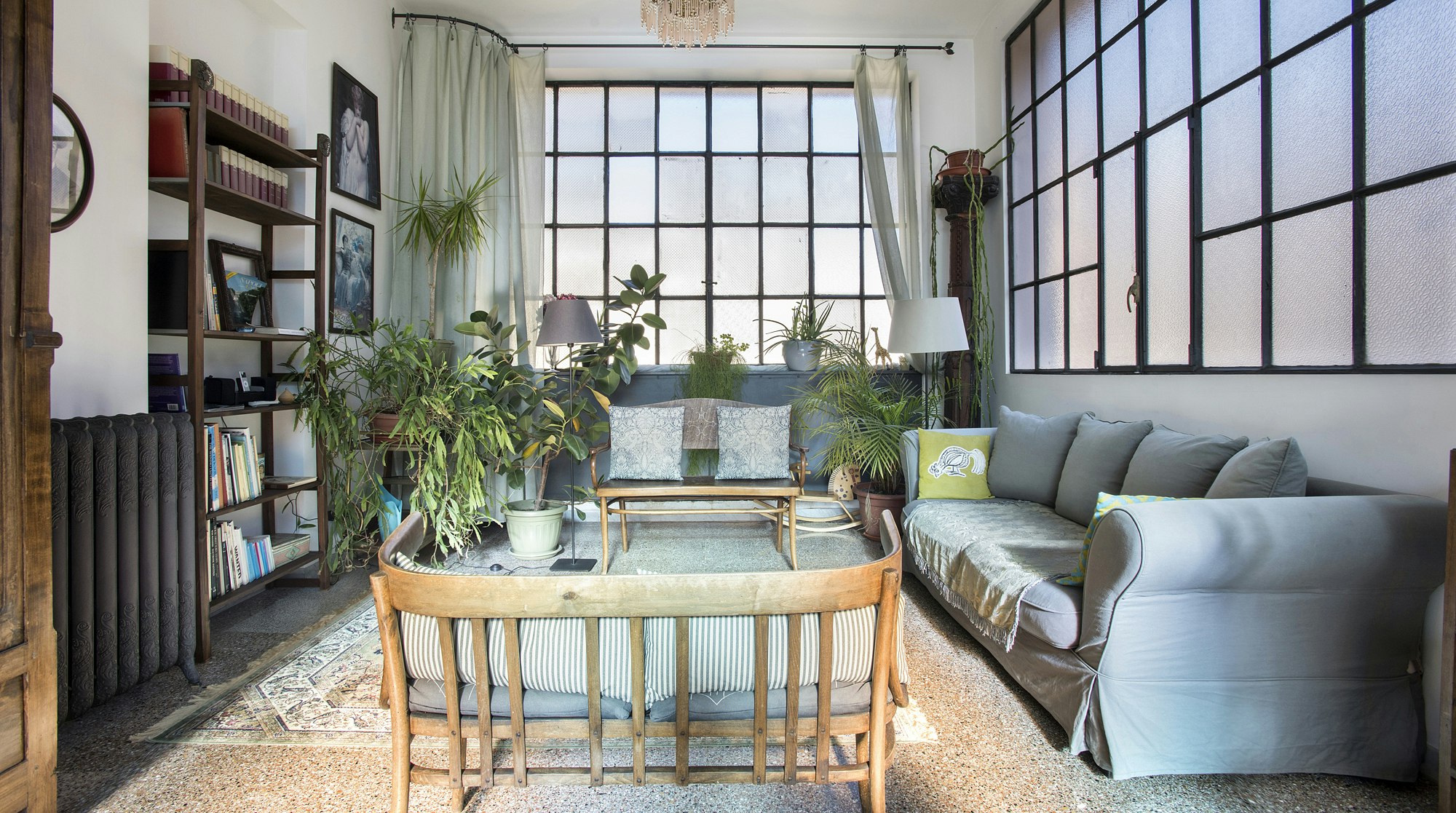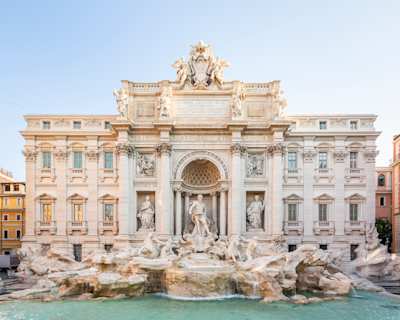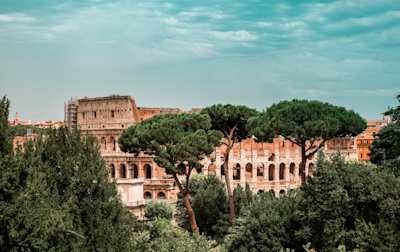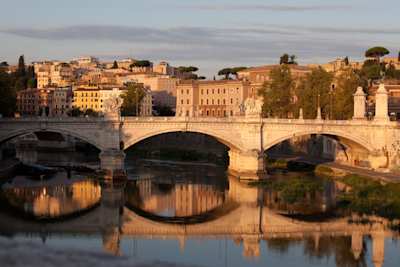Where to Stay in Rome in Our Expert Opinion
We're sharing our tips on the best areas to base yourself in the Eternal City, no matter what type of traveller you are.
~
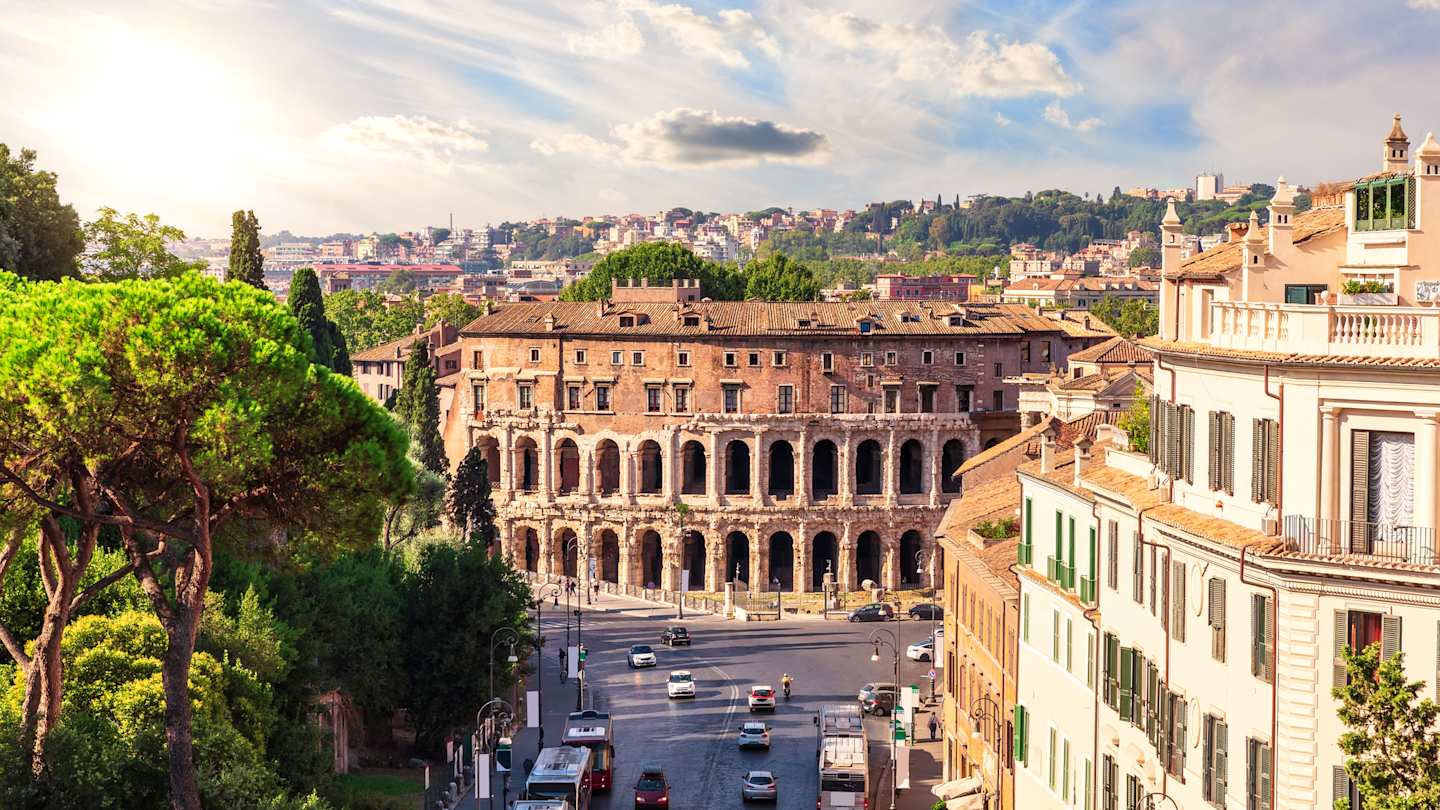
Rome, or the Eternal City, is a mesmerising mix of old and new, with ancient ruins standing alongside modern art museums, high-end shops and fine-dining restaurants. On one end of the spectrum you've got the Sistine Chapel ceiling painted by Michelangelo, and on the other, striking street art in Trastevere. Whether you're visiting the city for a long weekend or settling in for a little while longer, take a look at our guide to where to stay in Rome. Get ready to start living la dolce vita – from waking up in your delightful Plum Guide home each morning to sipping a sunset Aperol Spritz each evening.
Centro Storico

Trevi Fountain, Rome
Otherwise known as the historic centre of Rome, Centro Storico is everything inside the city walls including some of Rome’s major monuments: the Spanish Steps, Piazza Navona and the Colosseum to name a few. Keep in mind, there are several neighbourhoods within Centro Storico, and we’ve outlined the very best ones in this guide. Basically, if you want to be close to everything, pick a neighbourhood within Centro Storico. Only in Rome for the weekend? This is a great base. Start your morning with an early visit to the Colosseum. Next, head to the Spanish steps for some people watching (and maybe a gelato). When you’ve mustered up that extra pistachio-flavoured energy, climb the 138 stairs up to the top for a remarkable view over Rome.
Campo Marzio

Pantheon, Rome
Pope Benedict XIV instituted the Campo Marzio district in 1743 but the significance of this area dates even further back. Temples and buildings appeared as early as the 5th century B.C. Today, the main attraction in Campo Marzio is the Pantheon in Piazza della Rotonda, a temple built in 27 B.C. Built solely of brick, you’ll note both Greek-style architecture and a cylindrical body. Pay a morning visit to the Pantheon before checking out the Montecitorio palace. It boasts an Egyptian oblique of Pharaoh Osammetico II that was brought over to Rome from Heliopolis and transferred here in 1792. Come lunchtime, wander along Via Del Corso, taking in the many churches and palaces along the way. The avenue connects with Piazza del Popolo, which is a popular spot for both locals and tourists alike.
Monti (and the Caelian Hill)
As Rome’s oldest neighbourhood, there’s something magical about Monti. Thanks to its sloping hills, you’ll get some fantastic views of the Colosseum...not to mention an extra workout. On either side of Monti, you have the Basilica of Santa Maria Maggiore and the Roman Forum, so it’s easy to get your bearings at any given time. Cobbled streets and side alleyways add even more charm to this romantic neighbourhood. This is our pick of where to stay in Rome for the first time, offering visitors the chance to discover the city's allure. Once you've (finally) left the comfort of your bed, start your day with a visit to the nearby Colosseum. Afterwards, cool off with a beer in Piazza della Madonna de Monti (it's 5 o clock somewhere) or head to Piazza degli Zingari for homemade gelato instead. Fata Morgana serves up traditional flavours as well as a few unexpected ones too, like Cherry, Beer and Gorgonzola. On Sundays, get ready for the weekly Mercato Monti. Browse through vintage clothes and accessories where you can pick up pieces by the likes of Vivienne Westwood and John Paul Gautier.
Trastevere

A picturesque street with cobblestones and vines in the historic Trastevere district, Rome
Translating to 'across the Tevere' (or the Tiber), you’ll note a decidedly younger crowd in Trastevere. Formerly a working-class medieval district, what used to be a somewhat overlooked neighbourhood is now brimming with an outdoor cafe culture, cool microbreweries and some of the most inventive eateries in the city. The Piazza di Santa Maria is a must-see. It’s one of the oldest churches in Rome and is renowned for its 13th-century mosaics by Pietro Cavallini. On a lesser scale, Trastevere has some pretty impressive street art - keep a lookout, as murals and graffiti are literally hiding in plain sight.
Testaccio (and the Aventine Hill)
A short walk from the Colosseum, south of the Aventine hill, is Testaccio. While it doesn’t have the glamour of other Roman neighbourhoods, its grittiness is what we love about it. It also happens to be the go-to place for foodies, boasting great restaurants and food markets. Start your morning with a pit-stop at Testaccio Market. Open since 2012, the market has created a major buzz, most notably, through tourism. Browse the stalls for fresh produce, meats of every shape and size, street food, sweet treats, wine and plenty more. There’s even a deli run by Cristina Bowerman, one of Italy's famed female chefs with a Michelin star to her name. The deli is called Cups and while more casual than Bowerman’s Glass Hostaria, it's a must-try. Curious to step foot in the old slaughterhouse? Today, a portion of the space serves as a branch of the MACRO (Rome’s contemporary art museum) - other parts are dedicated to farmer’s markets, food festivals, a restaurant called Station di Posta and even a music school.
Campo de’ Fiori
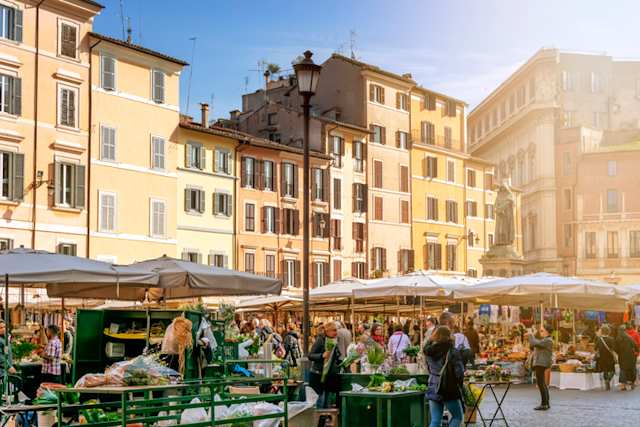
Daytime view of the ancient vegetable market in Piazza Campo de Fiori in Rome, Italy
Technically, Campo de’ Fiori, or 'Field of Flowers' is not an actual neighbourhood but a piazza. As its name suggests, Campo de’ Fiori is home to one of Rome’s biggest and most popular markets. By day, Campo is alive with its stalls as well as shops, restaurants, museums and cafes. Come nightfall, its bustling bar scene takes over. Spend your morning browsing the fruit and vegetable stands at the open-air market (open Monday through Saturday) - traders open early and close whenever the food runs out, so it’s worth heading there first thing. Next, head to Palazzo Farnese. Built between 1514 and 1589, a number of famous residents have lived here, including Pope Paul III, Cardinal Richelieu and the former Queen Christian of Sweden. Next up, make your way to the old Jewish Quarter for a wander. The Via Portico d’Ottavia is at the heart of the neighbourhood, while the Great Synagogue of Rome is arguably the top attraction. The synagogue was built from 1901 to 1904 and showcases a style evocative of Babylonian and Persian temples.
Tridente

View from above of the Tridente neighbourhood in Rome
Tridente gets its name from the three streets leading into it: Via di Ripetta, Via del Babuino and Via del Corso. The biggest attraction here is Piazza di Spagna, where the Spanish Steps are located. Then there’s Piazza del Popolo and the famous twin churches Santa Maria di Montesanto and Santa Maria di Miracoli. Of course, no trip through Tridente is complete without tossing a wish—in the form of a coin—into the Trevi Fountain. If you're anything like us you'll want to avoid the flocks of tourists that gather here, so set off early and make the most of the morning peace and quiet while it last. Later in the day, stroll in and around Piazza del Popolo. Tridente is one of the most sophisticated neighbourhoods in Rome, so prepare to do some serious window shopping. You'll find a lot of flagships here.
Villa Borghese (and Via Veneto)
For a true Roman experience, spend an afternoon walking in one of the most famous streets in Italy’s capital. After all, Via Veneto is the setting of Fellini’s “La Dolce Vita.” It's people-watching at its finest, thanks to the area’s wide sidewalks and street-side cafes. It’s also home to the picturesque Villa Borghese park, and accompanying Galleria Borghese. Whenever the crowds of Centro Storico become too much, find your way to Villa Borghese. It’s the largest public park in Rome and ideal for basking in the sun for a couple of hours. You can walk the length of the park in about 45 minutes or if you're feeling more adventurous, rent a bike and cycle your way through, stopping for a gelato or an espresso (or both). As for Via Veneto, expect everything to be the 5-star quality you deserve.
The Vatican

Vatican City
What many overlook during their trip to Rome is that the Vatican City, while just outside of Rome, is actually its own city-state. As the headquarters of the Roman Catholic Church and where the Pope himself resides, the Vatican is a bucket list experience that you really can’t miss out on. The Vatican Museums house all sorts of treasures, from ancient Roman statues to Renaissance frescoes and, of course, the famous Michelangelo ceiling. The Vatican City can be explored in a day (or less if time is of the essence), meaning you can technically visit an entire nation in the span of a few hours. Talk about productive. Inside the Vatican, you'll uncover a treasure trove of religious artifacts, along with artworks of many forms. After your visit, spend some time in St. Peter’s Square, also known as Piazza San Pietro. Located right in front of the St. Peter’s Basilica, up to 400,000 people can fit inside. Gather your energy and climb to the top of the basilica’s dome - it offers a 360 degree view of the square and all of Rome.
Prati

Tiber riverside with Church of the Sacred Heart of Jesus in Prati, Rome
Translating to 'meadow' in Italian, Prati is one of Rome’s more fashionable neighbourhoods. It’s also in an ideal spot just north of the historic centre, giving it easy access to Rome’s historic landmarks but far fewer tourists. Castel Sant’Angelo, Vatican City and St. Peter’s Square are within walking distance. Whilst out and about exploring your neighbourhood, take a moment to relax in one of Monti’s luxurious palazzos. The wide, shady boulevards make for a much-needed reprieve from the heat and hustle of Centro Storico. Or, grab a table at a cafe in the Piazza Cavour for some people watching. Come evening, watch as the locals shift from their work attire to something a little more fancy. Architecture is another reason why Prati is on our list of where to stay in Rome. There are both art nouveau and Umbertino architectural styles as well as some other fabulous buildings. The Palace of Justice is particularly decadent, with its huge rooftop sculpture made of bronze and depicting a four-horse-drawn chariot.
About Plum Guide:
Has our guide to where to stay in Rome tempted you to a trip? Next up is to decide on the perfect Plum home in Rome. Our home critics personally (and painstakingly) vet each and every award-winning home on our site to ensure that everything is up to the high standards you deserve. Put simply, you're always in good hands when you stay with Plum.


